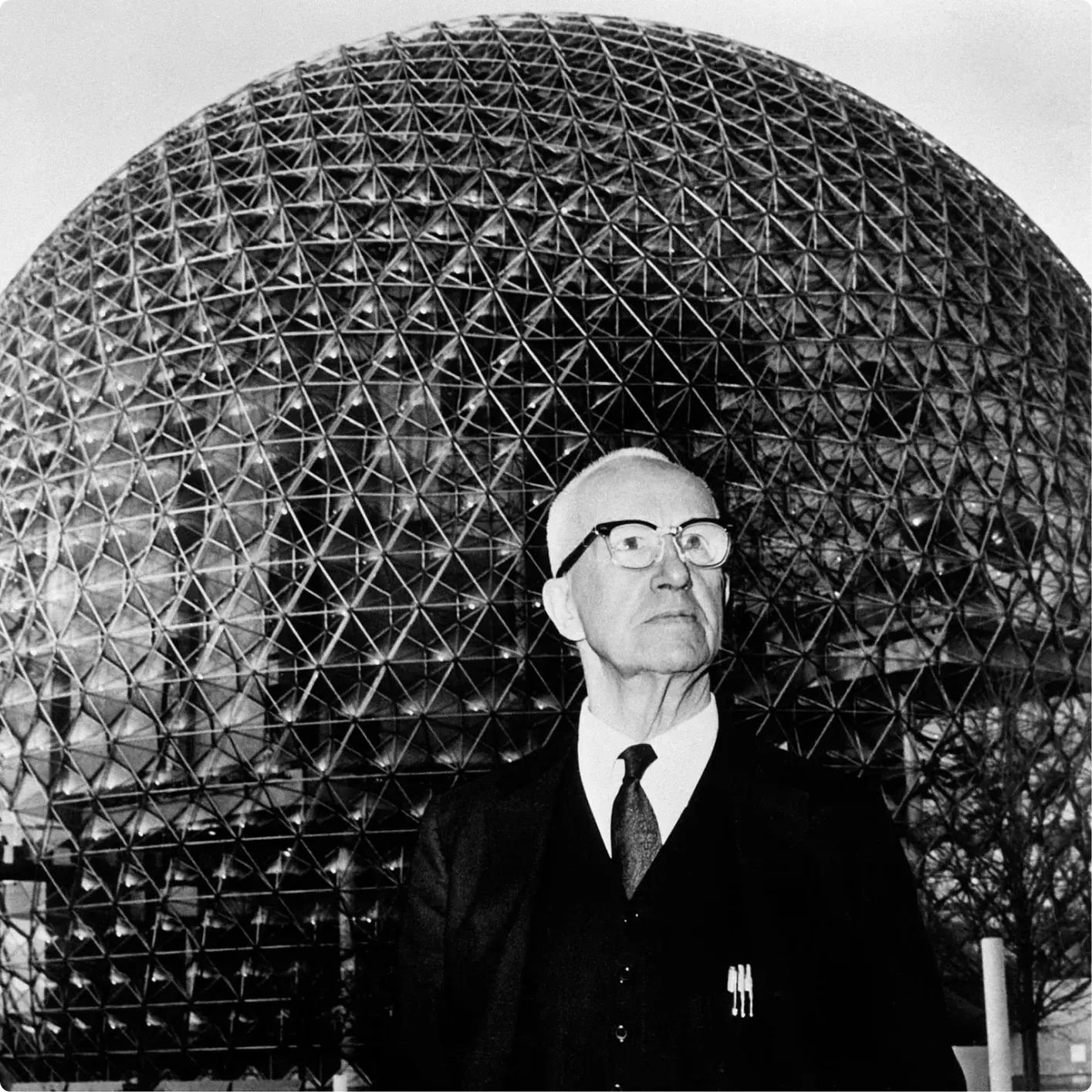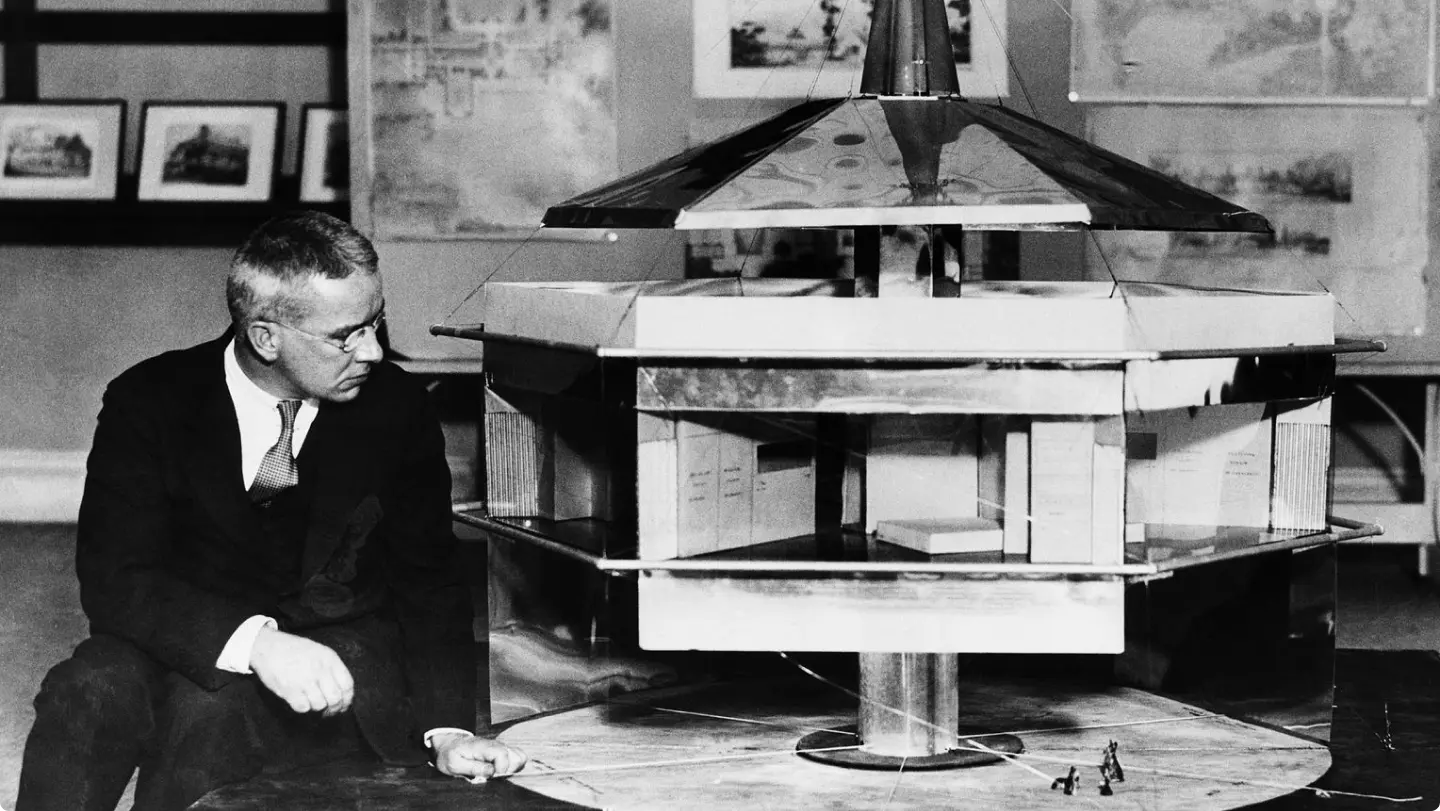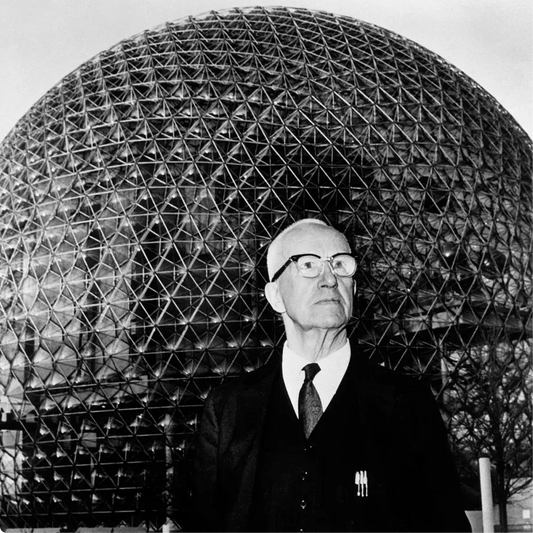It was only when he was completely down that he decided to save the world: until he was 32, Buckminster Fuller's biography was a complete disaster. Expelled from the elite Harvard University for partying too much. Assembly line jobs in Chicago's textile and packaging factories. Then nothing more. Fall into unemployment. And in 1922, when he was just 27 years old, life dealt him the hardest blow: his four-year-old daughter Alexandra suddenly fell ill with polio and died. Now, five years later, his life was in ruins: he was bankrupt and a drunk. At just 32 years old, his life seemed to have failed. What was the point of living if you were so helpless to face your fate?
This made-up word, which would accompany Fuller for the rest of his life, was created in 1929: He began his project to save the world by planning a new house that would be energy-saving, environmentally friendly and affordable for everyone. The result was a UFO-like structure made of steel with a huge aluminum mast in the middle. The entire building, whose shape Fuller was inspired by grain silos, hung from steel cables at the top of the mast. Because the entire structure was made of steel (Fuller considered concrete houses to be an architectural aberration), the house was light enough to be transported on a truck. If you moved, you simply took your home with you. At least that was Fuller's plan, as only a small model still existed.
Fuller wanted to exhibit it in a branch of the Marshall Fields department store chain in Chicago - but for that he needed a memorable name. And so he hired a copywriter and tried to explain his ideas to him: Fuller spoke enthusiastically to the man for two whole days - until in the end he was only able to hear snippets of typical Fuller words that were repeated over and over again in the endless lecture poured it in, held it - and created an artificial word from it: "Dymaxion", a combination of "dynamic", "maximal" and "tension". His client was absolutely thrilled.
Lorem ipsum dolor sit amet, consetetur sadipscing elitr, sed diam nonumy eirmod tempor invidunt ut labore et dolore magna aliquyam erat, sed diam voluptua. At vero eos et accusam et justo duo dolores et ea rebum. Stet clita kasd gubergren, no sea takimata sanctus est Lorem ipsum dolor sit amet.Even though the three prototypes of the model, which were built a year later, had no wings - parts of the car still took off, as design historian Russel Flinchum said on March 15 . June 2008 in the "New York Times" recalled: "Apparently, when the car reached 145 kilometers per hour, the rear wheel lost contact with the ground. Unfortunately, it then began to roll uncontrollably." Nevertheless - for a few months the futuristic vehicle was on everyone's lips: the writer HG Wells posed with it for photos, star conductor Leopold Stokowski bought one of the prototypes and the painter Diego Rivera is also said to have shown interest. But during a show trip with two interested investors in July 1933, one of the prototypes overturned. The driver died. Within a short time, the daring autovision disappeared from the scene again.
But the stubborn inventor didn't let himself be dissuaded from his plan to change the world - and so he simply reinvented it: On March 1, 1943, he presented his Dymaxion world map in "Life" magazine, which resembled nothing you see had previously seen in atlases: In order to avoid the distortion of conventional world maps, he painted the continents on a kind of craft sheet that could be folded into polyhedra, polyhedral geometric bodies, in order to approximate the spherical shape of the earth. The whole thing looked like a confusing puzzle game, but it was nothing less than a social criticism of the prevailing world order: Fuller argued that there was no up or down in the universe. The widespread representation that the North is "above" and the South is "below" arises entirely from the cultural prejudice that the North is superior and the South is inferior. With the Dymaxion card, however, there was no longer any top or bottom.






